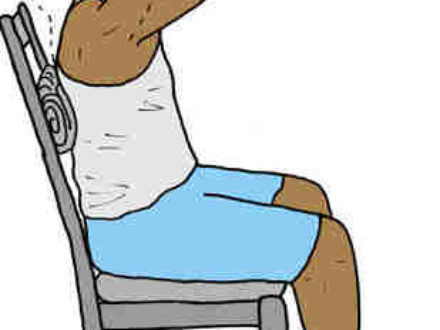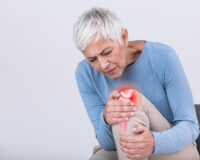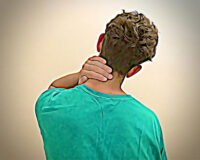
Proprioception and Balance Training to Prevent Falls in the Elderly
The following blog is based upon the information in the book written by Anne Shumway-Cook & Marjorie H. Woollacott, titled “Motor Control: Translating Research into Clinical Practice” and also based upon clinical experience of one of our own physiotherapists at Therapia.
Falls cause 2/3rds of deaths due to unintentional injury in the elderly, which is the 5th leading cause of death of people over 65 years of age.
A fall by an elderly person can be defined as “a situation in which the older adult falls to the ground or is found lying on the ground” or “any unintended contact with a supporting surface, such as a chair, counter or wall”. (Shumway-Cook & Woollacott 2017)
At Therapia, we have your health, and the prevention of such an adverse event, in our best interest and priority. We have decided to write a blog post to provide you with information to help minimise your risk of falling and increase your chances to lead a fit and healthy ageing process.
The following list presents risk factors that are relevant to individual factors that increase the chance of falling:
- Muscle weakness
- History of falling
- Walk with a limp
- Poor balance (feel wobbly when walking)
- Use of a walking aid (e.g. walking stick or frame)
- Poor vision
- Arthritis
- Depression
- Poor cognition (e.g. memory/ ability to problem solve)
- Age greater than 80 years old
Are any of the symptoms listed above relevant to you?
It is difficult to attribute ageing as the sole reason for the development of the traits listed above, as older adults of the same age can demonstrate physical function ranging from physically elite to entirely dependent on others for all activities of daily living. However, there are some common trends of declining function to do with the neuromuscular system which occur in older adults, and although age may not be the main cause for these changes in the systems of postural control, it is likely, increasing age has a detrimental effect.
The aspects of the systems of postural control potentially detrimentally affected by age include:
- Muscle strength
- Range of motion
- Static balance (ability to remain stable when you are not moving)
- Dynamic balance (ability to remain stable with movement)
- Reactive balance control (ability to sequence movement, time muscle activation and adapt to changing tasks and environmental demands
- Anticipatory balance control (the ability to stabilise the body before performing a movement)
- Sensation (the ability to detect change in the external environment through vision, hearing, touch, ability to sense vibration, and proprioception, or the ability to sense where your body is in space)
It is also necessary to comment on the loss of bone density associated with increased age (>50 years old) (Osteoporosis Australia, 2014). A loss of bone density increases your risk of fracture when falling and is something everyone can and should actively work to minimise.
The physiotherapists at Therapia are very keen to guide you and minimise your risk of falling. Therefore, we have developed a very simple home exercise program for all readers, using equipment all should have access to, to enable you to take action to reduce your risk of developing risk factors of falling and consequently your overall risk of falling, immediately!!:
Sit to stand (to increase muscle strength)
Sitting upright in a chair
Lean forward with hands on chair
Push through arms and heels keeping back straight
Squeeze your buttocks to stand as tall as possible
Repeat 15 squats
Perform 3 x daily
–
Thoracic extension (to increase range of motion)
Sitting on a chair which has a high back
Place a rolled towel horizontally behind your shoulder blades
Place both hands behind your neck and interlock your fingers
Touch elbows together
Bend backward to a comfortable position and hold for 30seconds
Perform 3 x daily
–
SLS (to increase static postural control)
Standing next to a stable object
Place one hand on the stable object
Lift one leg off of the floor to form a L-shape
If you are confident and safe, take your hand off of the chair
Hold for 30 seconds
Repeat on the opposite leg
Perform 3 x daily
–
SLS – Eyes closed (to enhance sensation especially proprioception)
As above, however once stable, close your eyes and hold for 30 seconds
–
Tandem stance (to increase static postural control)
Standing next to a stable object
Place one hand on the stable object
Place one foot directly in front of the other, so that your toes of the back foot are touching the heel of the front foot, forming in a straight line
If you are confident and safe, take your hand off of the chair
Hold for 30 seconds
Repeat with the opposite leg in front
Perform 3 x daily
–
Tandem walking (to increase dynamic postural control)
Continue to get into the position as above, however, continue walking – like you are walking on a tightrope! (We recommend alongside the kitchen bench for safety precautions)
30 minutes of walking daily (to increase bone density, dynamic postural control anticipatory balance and importantly cardiovascular fitness – or heart and lung health!!)
This program is very basic and does not cover all of the aspects of postural control. Please make an appointment with one of our physiotherapists to extend your exercise program, so that we can make it more tailored to your needs and more interesting. We will use modern, exciting equipment and more fun movements!!
Finally, the following listed items are external factors that also increase one’s likelihood of falling. They are known as secondary factors and are easily controlled:
- Stairs
- Throw rugs
- Slippery surfaces
- Poor lighting
- Clutter in the home
- Uneven pavement
Please take a moment to consider how you can minimise your risk of falling through controlling these listed items, for example placing non-slip mats in the shower, reducing clutter in frequently used walkways, having a bedside lamp to use when going to the bathroom in the middle of the night.
We hope you have found this blog helpful and please do call us for any questions or comments.
Reference
Chapter 9 Shumway-Cook, A & Woollacott MH 2017, ‘Aging and Postural Control’, in M Nobel (ed.)Motor Control: Translating Research into Clinical Practice, 5th edition, Wolters Kluwer, Philadelphia, pp. 206- 228.
Book Appointment




